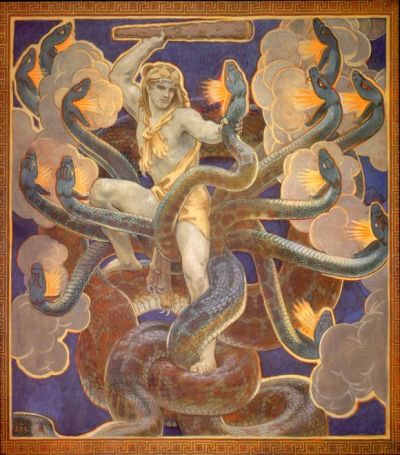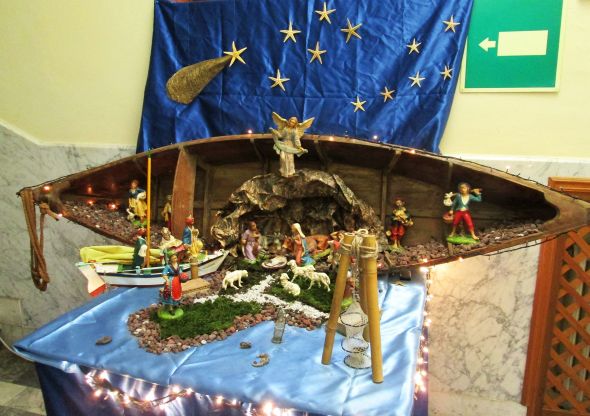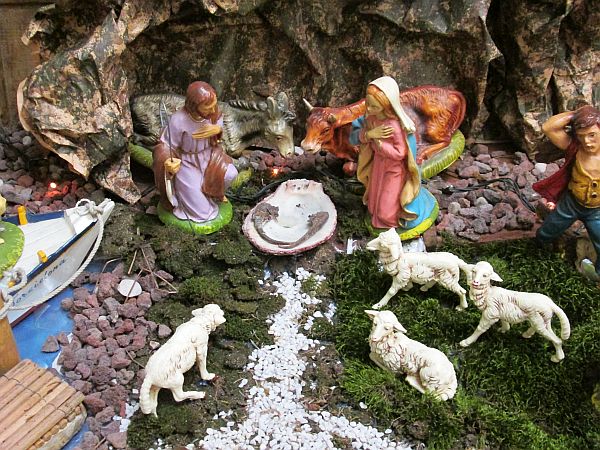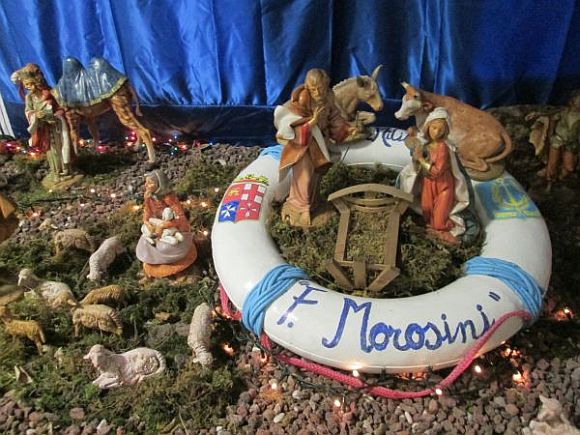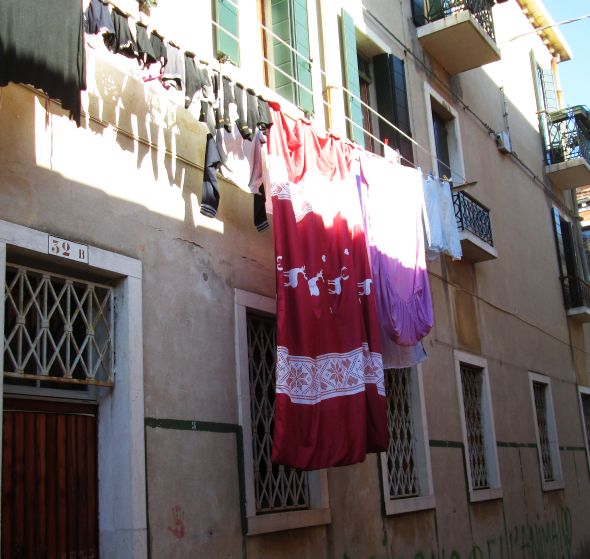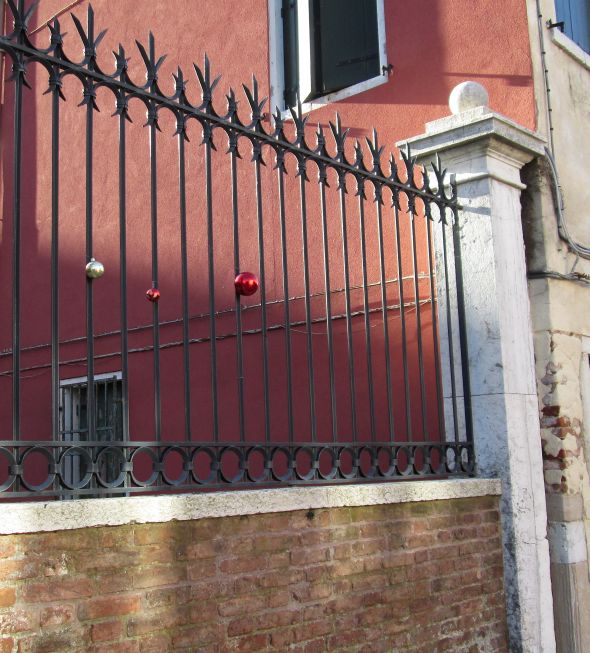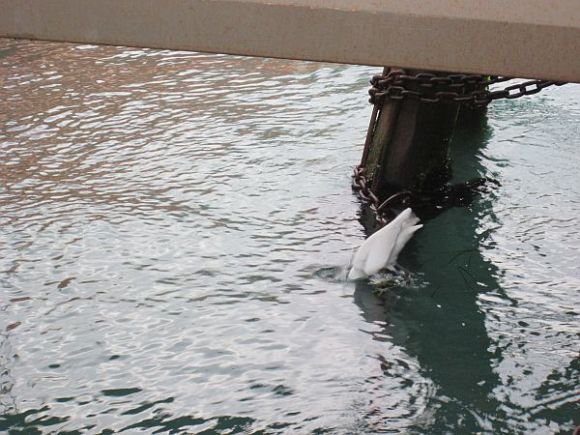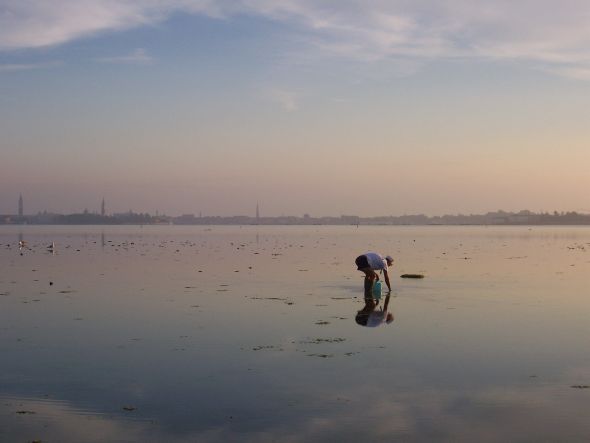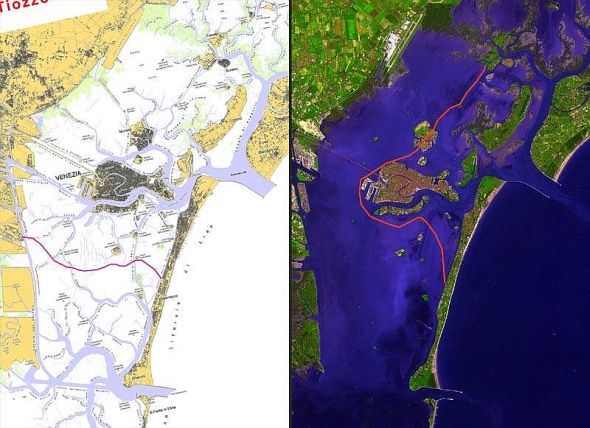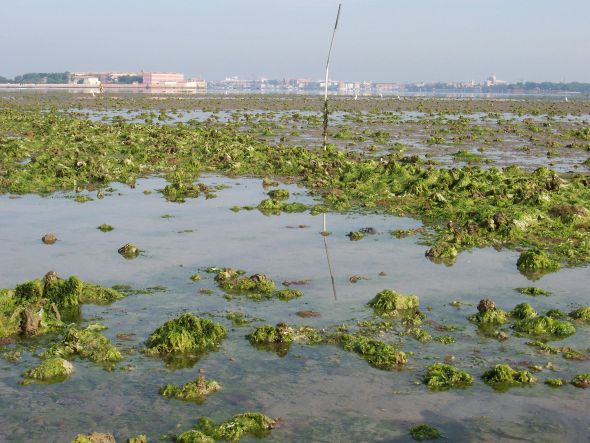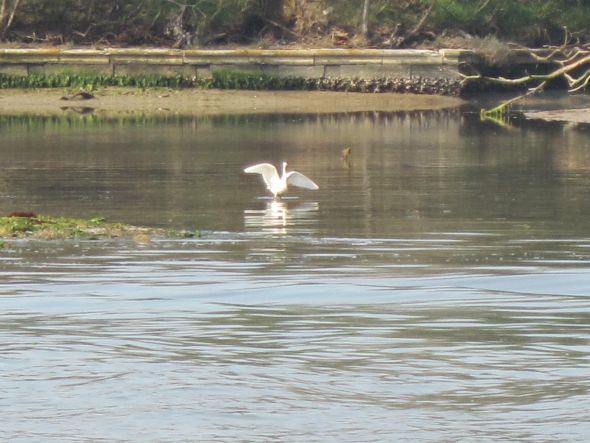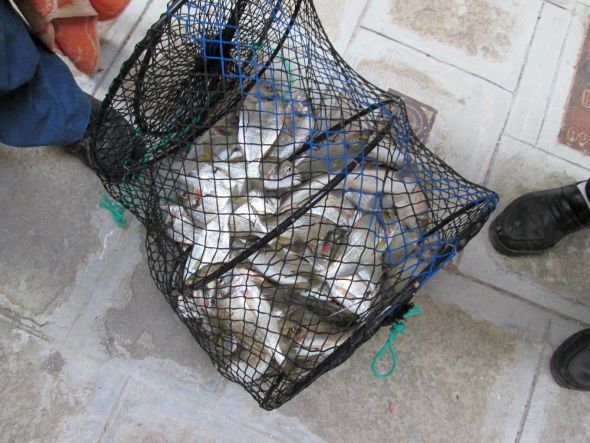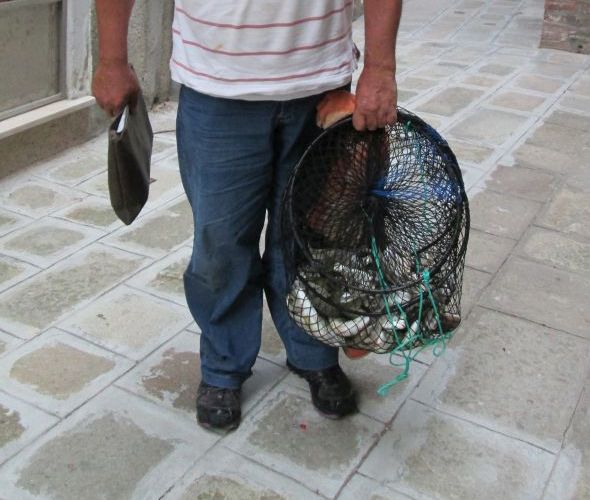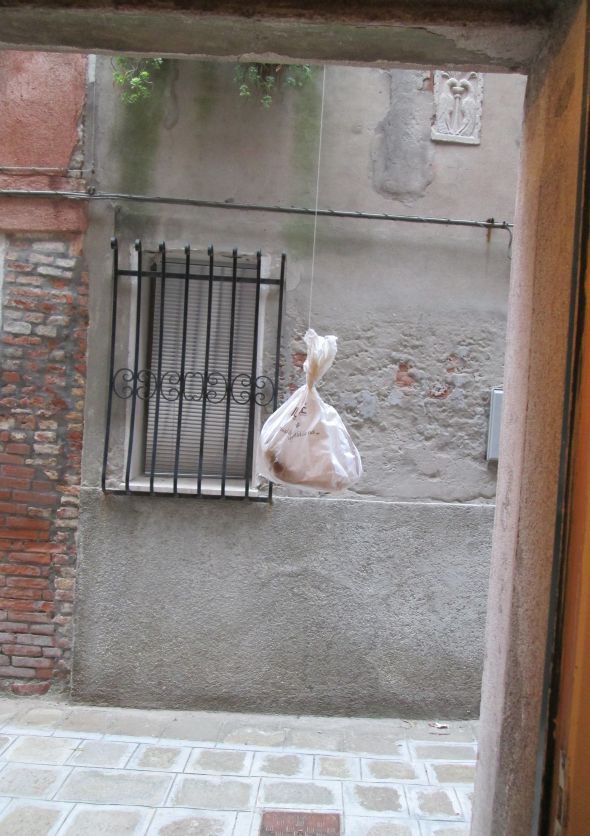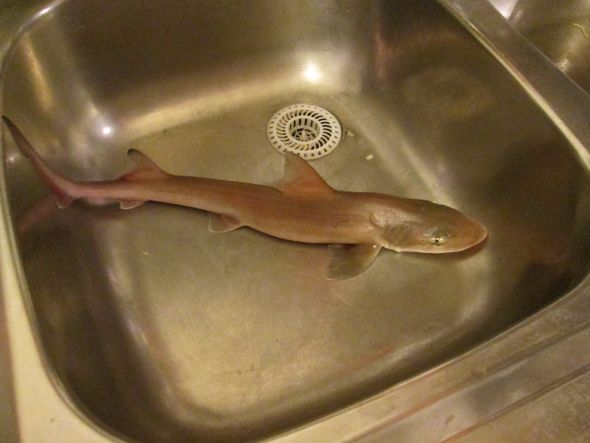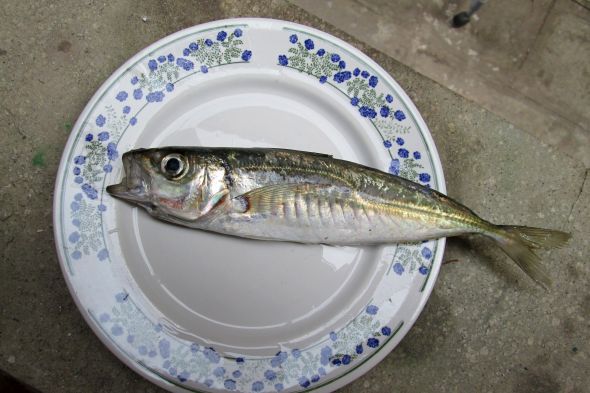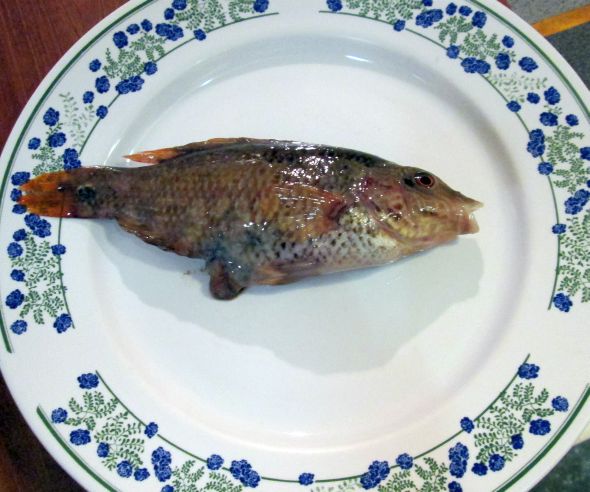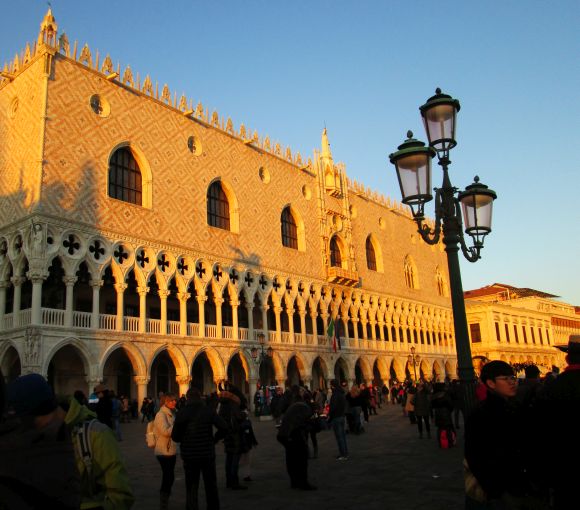
One thing that everybody loves about Venice is that it seems so old. Of course, it is old. It’s kind of like a Byzantine/Renaissance/Baroque/Neo-Classical Lascaux Caves, except that it’s inhabited.
I pause to say that I know there are at least 14 continuously inhabited cities in the world that are far, far older than Venice. I was just making the point that many visitors are struck with astonishment at the fact that Venice was ever created, an emotion I believe the cave paintings also elicit. But I’m getting off the point.
One thing that makes it feel old when you’re living here is the endless cycle of the same old things, and when I say that I don’t mean the Befana (with its utterly predictable brief annual cluster of highly-charged articles about the dangerous effects of the air pollution caused by the bonfires’ smoke), or the feast of the Redentore, or other celebrations.
By “same things” I mean issues that just keep coming up, that continue to be transformed in a shape-shifting way by assorted groups, interested parties, and random changes of circumstance, but that never get settled. Even in the rare instances when a problem appears to have been resolved, before long we discover that it has spawned new problems. And the cycle begins again.
In the few days since 2015 began, the Gazzettino has filled its pages with a new crop of the old. Such as:
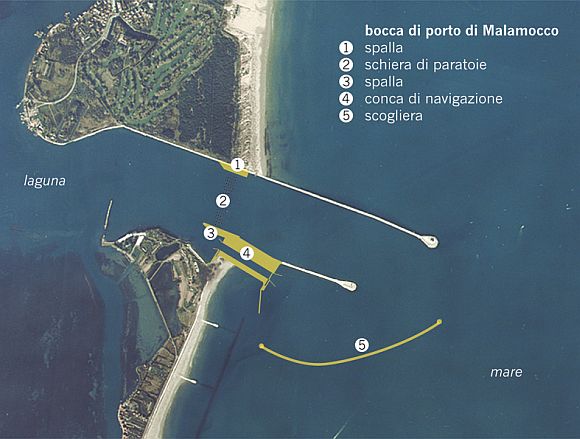
MOSE: No, this time it’s not about the gates themselves, nor about the billions that were stolen to pay off its many participants, collaborators, and well-wishers. Now it’s about the conca, or basin (#4 on the image above), which was dug at the inlet of Malamocco to permit the passage of ships on the occasions when the gates are raised.
For one thing, it’s too small.
It has been designed to accommodate ships up to 280 meters (918 feet) long and 39 meters (128 feet) wide. These dimensions are already too small for the largest cruise ships, the ones that certain groups want to compel to enter the lagoon by way of Malamocco instead of by the Bacino of San Marco. So a mega-cruise ship wanting to come to Venice would have to hang around outside in the Adriatic until the tide turned and the gates were lowered, to let them continue with their plan to unload thousands of passengers and take on more. Having to delay entry sounds like a new problem has just replaced the old.
But it gets worse. The fundamental problem isn’t size. It’s the positioning of the scogliera (skoh-LYEH-ra), or protective barrier, in relation to the basin. Stick with me here, because in the world of engineering “oops!” this is kind of special. And whatever you may think about cruise ships, we now have to consider the needs of real grown-up working ships that haul containers and petroleum and grain and coal (for the power station just on the edge of the mainland); these are ships for which time really is money.
The curve and position of the barrier built to shield the basin from wild stormy water (the kind you might well have if there is an exceptional acqua alta underway) makes it difficult — in some cases, perhaps impossible — for even smaller ships to navigate themselves into a perfect straight line to enter the basin.
“About 2,000 vessels (note: That’s nearly six per day) enter and exit the lagoon each year,” said Alessandro Santi, president of Assoagenti Veneto, the maritime agents’ association. “Of these, at least 350, in the current state of things, would be prevented from entering the basin.” They’d have to wait outside till the tide turned and the MOSE gates were lowered to allow them to enter by the usual channel.
Solution! Construct an additional rubber barrier (I have no further details) against which the ships could lean — a sort of fulcrum — to help them position themselves to enter the basin. I’m referring to the ships which can, in fact, enter the basin, which as you see isn’t going to be all of them.
Projected cost: 15 million euros ($17,669,900). That’s one heck of a patch.
Speaking of cost, the news has just come out that the completion date for MOSE has yet again been postponed. It is currently predicted to be finished in mid-2017, and will cost an additional 2 billion euros ($2,355,980,000). Unless it turns out to cost more, of course.
So why is this an old subject? Because it’s yet another aspect of a project that wasn’t planned correctly, but construction just went merrily along anyway, and now everybody is having to find ways to resolve problems that didn’t ever have to exist.

DEGRADO: The terse but expressive and useful term degrado (deh-GRAH-do) means “degradation,” and it finds innumerable uses. And I will keep this entry short because the subject deserves a post all of its own, if I could find the strength.
Degrado is a hydra-headed monster composed of graffiti, broken pavements, disintegrating nizioleti, and now strata of aging posters stuck up all over walls. The city of Venice, and myriad individuals, put up these pieces of paper with or without permission, and these announcements of all sorts of events, needs or offers stay there because once the moment has passed, who cares?
The city says it cares, and since 2012 has spent 856,000 euros ($1,008,360) to pay a private company named A.R. Promotion to affix posters and also to strip away the accumulated crud. But evidently the announcements breed at night and produce more old posters, or somehow the private company isn’t keeping up. Or perhaps even starting, who knows?
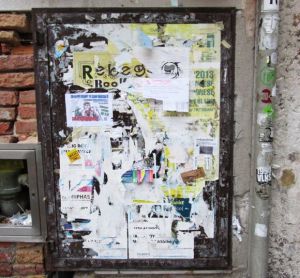
Breakdown of payments made: At the end of 2012 A.R. Promotion won the bid to do this work for one and a half years for 456,000 euros. A few years later, the same company got the job for about two years for 400,000 euros. The age of some of the posters indicates that in either one or other of these periods, the company somehow didn’t catch everything.
Let me say that having to hack away layers of gummy paper over a period of years does not speak well for the paper-hangers. Because while one could criticize the ability of A.R. Promotion to remove paper, one could much more justly criticize the cretins who put up the pieces of paper in the first place.
But back to the subject of payment for services rendered, or not: Cecilia Tonon, president of the volunteer group Masegni e Nizioleti, has raised her hand to ask why the city is paying for a service which evidently isn’t provided, when squadrons of members have turned out more than once to do a large amount of this very work for free. (I participated in one clean-up project, which I’ll write about another time.)
No answer has yet forthcome.
Intermission: News from the trial of the Indian couple who murdered their Iranian roommate, Mahtab Ahadsavoji, and dumped her body in the lagoon. The Indian girl has been identified as the culprit, and has been sentenced to 17 years in prison. Her boyfriend got a smaller sentence because he merely helped dispose of the evidence. Appeals will drag on.
BUDGET: For years now we’ve had to listen to the municipal choir singing the Anvil Chorus, financial version, whose refrain is “No ghe xe schei” (there is no money).
We found out last year that the reason there was no money was because it had all been gift-wrapped and given to politicians and businessmen involved in the MOSE project.
So now there really is no money.
After working his way upstream through heavy fire from outraged city employees facing drastic cuts, attempting to make the budget balance in some miraculous way (“miraculous” meaning “money from Rome”), the emergency governor, Vittorio Zappalorto, has had to say it isn’t working. The city is 60 million euros ($70,855,800) in the hole.
“The situation is unsustainable,” he said. “We’ve reached a point of no return, The next mayor is going to have” (I freely translate) “one hell of a hideous job.” The Casino’, once an endless font of funds, is also now crouching over its begging bowls. The sale of palaces is almost the only option for raising money, but so far they are being sold at slashed, fire-sale prices, or not being sold at all.
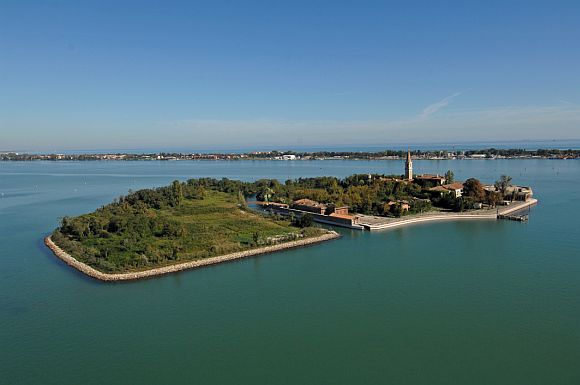
POVEGLIA: Remember the popular groundswell, funded by citizen contributions, to acquire the island and restore it for the use of the Venetians rather than let it be sold to one of those terrible foreign companies which would transform it into a hotel?
All stuck in lawyer-land. The city put the island up for bids; the highest bid, from a private businessman, was snubbed by the city as being ridiculously low. To which the bidder has replied, “But you had no higher bids in this auction. So?”
In any case, the groundswell of Venice-for-the-Venetians emotion hasn’t been heard from in quite some time, considering that since last June 4, when the sky fell on Venice, much bigger problems have overcome everybody. It would be extremely difficult, in the current climate, to get anybody excited about an abandoned island.
BIG CRUISE SHIPS: This is an issue that’s so photogenic that it cauterizes people brains, rendering them incapable of thought. In battling to ban the ships from passing in the Bacino of San Marco, the enthusiasts have created a much larger problem, which is how to keep the port economy going when some cruise lines have already canceled their plans to come to Venice in 2015.
The no-big-ships people haven’t given any sign of caring much about the port itself, but they are baffled as to how to they feel about the digging of the Contorta Canal (officially named the Canale Contorta S. Angelo). But it seems clear to almost everybody that deepening the canal will create so many more problems than it solves that it makes my teeth grind all by themselves.
The tug of war about approving the Contorta canal is going to continue for an unspecified time. Another year, anyway, I have no doubt. There will be flourishing crops of claims, counter-claims, and recriminations.
Meanwhile, due to the canceled cruises, 300,000 fewer passengers are expected this year. This means people may very well be laid off or fired, and all the rest of the ripple effect that doesn’t need describing. There is also the loss of income from the taxes paid by the ship companies to be considered. Nice.
But what I don’t understand is why the ships are vilified as ugly, and therefore deserving of death, when everyday ugliness like graffiti just keeps rolling along, singing a song.
Old? New? Is there a difference?
